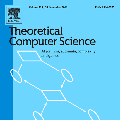The laws of Physics are time-reversible, making no qualitative distinction between the past and the future -- yet we can only go towards the future. This apparent contradiction is known as the "arrow of time problem". Its current resolution states that the future is the direction of increasing entropy. But entropy can only increase towards the future if it was low in the past, and past low entropy is a very strong assumption to make, because low entropy states are rather improbable, non-generic. Recent works from the Physics literature suggest, however, we may do away with this so-called "past hypothesis", in the presence of reversible dynamical laws featuring expansion. We prove that this can be the case in principle, within a toy model. It consists in graphs upon which particles circulate and interact according to local reversible rules. Some rules locally shrink or expand the graph. We prove that almost all states expand; entropy always increases as a consequence of expansion -- thereby providing a local explanation for the rise of an entropic arrow of time without the need for a past hypothesis. The discrete setting of this toy model allows us to deploy the full rigour of theoretical Computer Science proof techniques. It also allows for the numerical exploration of several physically-motivated variants: a time-symmetric variant; two inflationary variants; and a damping variant -- which slows down thermal death. The fact that all of these models exhibit similar behaviours suggests that local reversible expansion mechanisms constitute a robust recipe for a time arrow without past hypothesis. In this qualitative sense, the explanation may therefore also be relevant at the cosmological level.
翻译:暂无翻译





